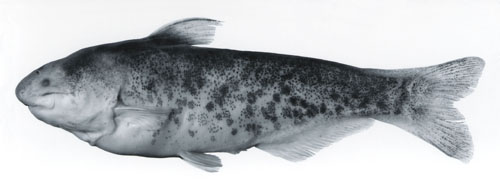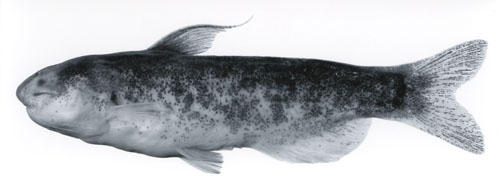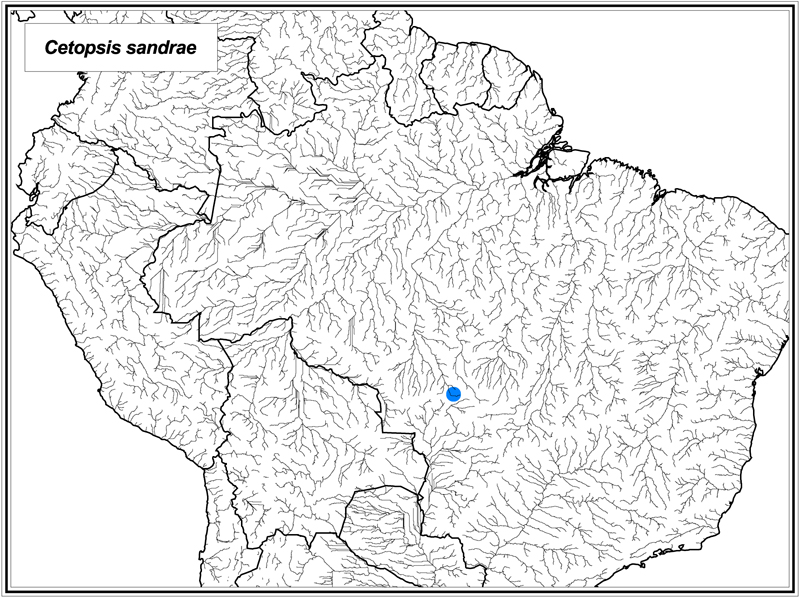

Reproduced from Vari, Ferraris and de Pinna (2005).
Cetopsis sandrae Vari, Ferraris & de Pinna, 2005
Identification: Cetopsis sandrae can be distinguished from all of its congeners by the combination of the presence of an eye, the conical teeth on the vomer and the dentary, the rounded posterior nares which is distinctly separated from the contralateral nares by a distance greater than the width of the posterior nares, the absence of a dark humeral spot, the presence of a posteriorly-rounded, variably-developed, bilobed patch of dark pigmentation at the base of the caudal fin, the presence of a spot of dark pigmentation on the base of the dorsal fin with prominent dark pigmentation present along the membrane behind the first ray of the dorsal fin, the possession of 40 or 41 total vertebrae (with 40 most common), the lack of a distinct demarcation between the dark pigmentation on the dorsal and dorsolateral surfaces of the body versus more ventral regions, and the presence of eye size or larger, dark spots on the ventral and ventrolateral surfaces of the body in the region below the horizontal extending through the ventral margin of the caudal peduncle. Maximum size: 75 mm SL.
Range: Cetopsis sandrae is known only from the Rio Arinos in the upper portions of the Rio Tapaj�s system, Amazon basin.
Information from Vari, R. P., C. J. Ferraris Jr. & M. C. C. de Pinna. 2005. The Neotropical whale catfishes (Siluriformes: Cetopsidae: Cetopsinae), a revisionary study. Neotropical Ichthyology 3:127-238.
